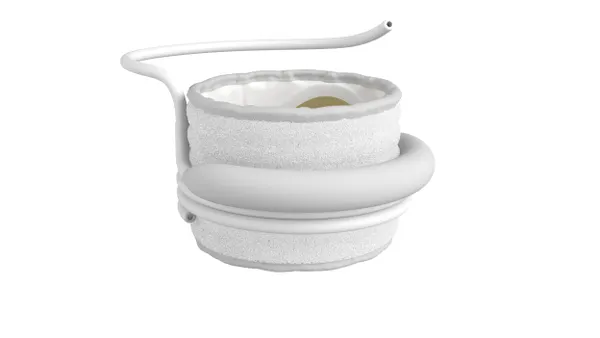Dive Brief:
- Medtronic's Mazor robotics and navigation technology and a new robotics application for NuVasive's Pulse integrated surgery platform were among the computer-assisted surgical technologies generating interest at the North American Spine Society (NASS) meeting last week in Chicago.
- Also on display were Zimmer Biomet's Rosa robot and a suite of new or pre-launch technologies from Globus Medical, according to analysts who attended the gathering.
- Based on forecasts from Medtronic, Johnson & Johnson and others, analysts at Jefferies said they see the spine market growing in the 1% to 3% range.
Dive Insight:
As in orthopaedic reconstruction, companies looking to move the needle in the spine device market are investing in robotics to compete.
Modest growth in the sector is a driving factor. Medtronic told investors in a session at the meeting that the U.S. spine market has returned to growth, with an increase in procedures offsetting pricing pressure. The company sees the market growing at a 2% to 3% rate, according to analyst coverage.
Payer pushback on spine surgeries has restrained market growth, but recent changes to a number of CMS payment codes and improved operating room efficiencies from new navigation systems are driving improvement in procedure volumes, Jefferies analysts said Friday in a research note. Robots have the potential to further improve workflows for spine surgeons.
"The tone on robotics in spine echoes that of ortho recon in that adoption of more advanced platforms is not an if, but a when," the analysts wrote.
Medtronic, at the NASS meeting, touted the fact its Mazor X Stealth system that provides navigation and robotic guidance in screw placement during spinal procedures has been used in more than 1,000 patient cases since its launch earlier this year. The medtech giant, which acquired the Mazor system last year in a $1.7 billion deal, has credited the technology with spurring demand for its spine implants.
Also during the meeting, NuVasive unveiled a robotics application for its newly launched Pulse platform, which combines neuromonitoring, surgical planning, rod bending, radiation reduction, imaging and navigation functions. The robotics application is designed to enable multiple robotic-assisted spine procedures including X360 and posterior screw placement, the company said. It incorporates an articulating arm which sits atop a mobile cart to allow for setup in the existing operating room.
RBC Capital Markets analysts wrote in a note to investors Monday "we think that [NuVasive's] robotic arm will be competitive at launch," which it anticipates happening in 2021. The analysts noted the platform may eventually have the capacity for bone cutting and disc removal through a software update but company management didn't peg timing on those potential additions.
Globus Medical demonstrated its ExcelsiusGPS robotic-assisted platform that integrates navigation with real-time feedback, disc preparation and implant insertion. The company said a technique combining robotic and navigation technologies with advanced implants can address complex cases from a single lateral position, with better accuracy, surgical efficiency and reduced radiation exposure.
The launch of Zimmer Biomet's Rosa Spine platform has been pushed back to 2020, the company has said while it focuses on its Rosa Knee robotic surgery platform. Advantages of the Rosa robot are that it can be used in both spine and brain procedures and that it is floor-mounted. But analysts at Needham said the system lags behind competitors on screw placement technology and doesn't offer pre-operative imaging.












